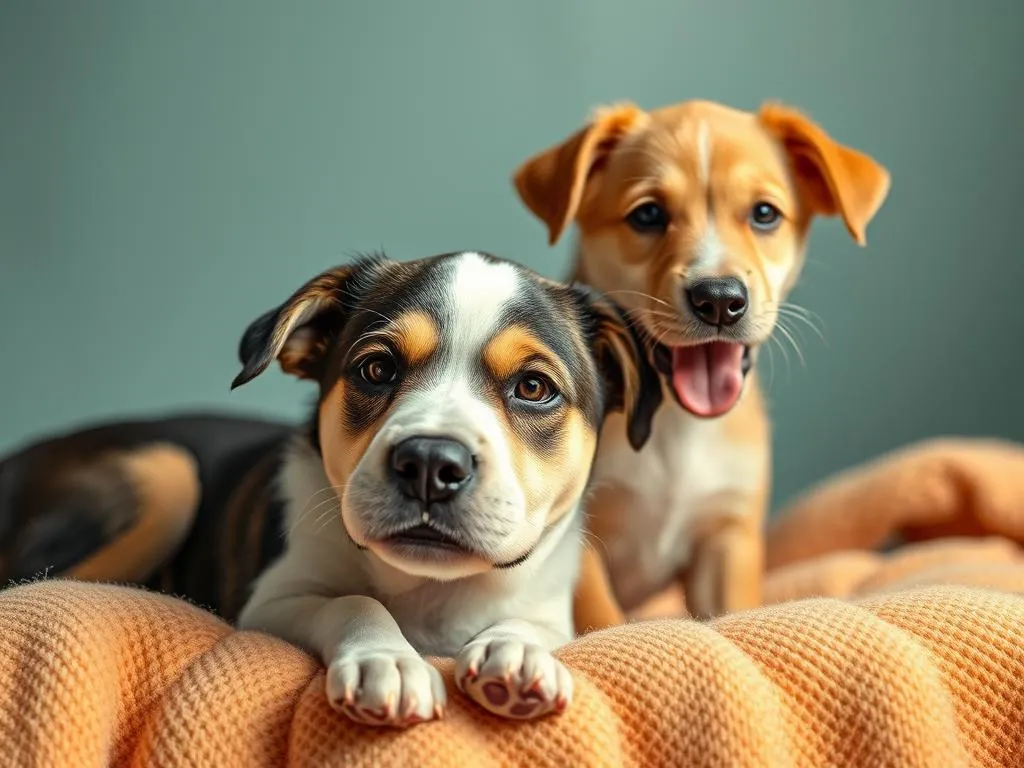
Understanding the emotional landscape of our furry friends can be a puzzling endeavor for many dog owners, especially when a new baby joins the family. Do dogs get jealous of babies? This question touches on a significant aspect of canine behavior that can influence the harmony of your household. Jealousy in animals, while often debated, is a real emotional response that can manifest in various ways.
Understanding Dog Behavior
What is Dog Jealousy?
Dog jealousy can be defined as a behavioral reaction to perceived threats to the attention or affection they receive from their owners. Dogs, like humans, can exhibit jealousy when they feel they are losing their owner’s attention to another being, whether that’s another dog, a pet, or a new baby. Unlike humans, however, dogs may not experience jealousy in the same complex way. Instead, their jealousy is often instinctual and tied to their need for security and social bonding.
Common signs of jealousy in dogs include:
- Attention-seeking behaviors: This can range from barking and whining to nudging or attempting to push themselves between the owner and the new baby.
- Aggressive reactions: In some cases, dogs may growl or snarl when they feel threatened by the new family member.
- Withdrawal: Conversely, some dogs may exhibit signs of depression or anxiety, retreating or becoming less interactive.
The Science Behind Dog Emotions
Dogs experience a range of emotions that can closely resemble human feelings, including love, fear, and jealousy. Studies have shown that dogs can experience empathy and bond strongly with their human caregivers.
The role of hormones and brain chemistry is crucial in understanding these emotions. For instance, oxytocin, often referred to as the “love hormone,” plays a significant role in bonding between dogs and humans. When a dog feels loved and secure, they are less likely to exhibit jealous behavior.
Recent studies have also suggested that dogs can recognize social hierarchies and may react negatively when they feel demoted in their status within the household. This is particularly relevant when a baby arrives, as it can disrupt the existing social structure.
Factors Influencing Jealousy in Dogs
Age and Socialization
A dog’s age and previous socialization experiences significantly influence its behavior when a new baby arrives. Younger dogs may be more adaptable, while older dogs may have established routines that are more challenging to alter.
Early socialization with children can help mitigate jealousy. Dogs that have been exposed to babies and children during their formative months are likely to adapt better to the presence of a new baby. For example, a well-socialized dog may be calm and curious about the baby, while an unsocialized dog might feel threatened or anxious.
Breed-Specific Behaviors
Certain dog breeds are more prone to jealousy due to their inherited traits. Breeds known for their loyalty and protectiveness, such as German Shepherds and Rottweilers, may exhibit possessive behavior towards their owners and, consequently, may become jealous of a new baby.
Conversely, breeds that are naturally more laid-back, like Basset Hounds or Golden Retrievers, may show less jealousy, adapting more easily to the new family dynamics. Understanding your dog’s breed-specific traits can provide insights into their potential reactions to a new baby.
Changes in the Household
The arrival of a new baby often brings significant changes to a household, which can be stressful for dogs. The shift in attention from the dog to the baby can lead to signs of stress or anxiety in your canine companion.
Common signs to watch for include:
- Changes in eating or sleeping habits
- Increased vocalization
- Destructive behaviors
To ease this transition for your dog, it’s crucial to maintain their routine as much as possible and introduce them to the baby gradually.
Identifying Signs of Jealousy in Dogs
Common Behavioral Indicators
Recognizing the symptoms of jealousy can help mitigate conflicts before they escalate. Dogs may display a variety of behaviors that indicate jealousy, such as:
- Barking, whining, or growling: Vocalizations can signal distress or a desire for attention.
- Attention-seeking behaviors: Dogs may engage in antics to draw focus back to themselves, such as jumping or nudging.
- Changes in eating or sleeping habits: A jealous dog may refuse to eat or may have trouble settling down at night.
Body Language to Watch For
Understanding a dog’s body language is crucial in recognizing jealousy. Key indicators include:
- Tail Position and Movement: A wagging tail can signal excitement, while a lowered, stiff tail may indicate discomfort or jealousy.
- Ears and Facial Expressions: Ears pinned back and tense facial muscles can suggest anxiety or jealousy.
- Overall Body Posture: A dog that stands rigidly or positions itself between the owner and the baby may be displaying possessive behavior.
Case Studies
Real-life examples illustrate the complexities of dog behavior in the presence of babies. For instance, a family reported that their older Labrador showed signs of jealousy when the newborn arrived, often attempting to push between the parents and the baby during interactions. In contrast, another family’s younger Beagle was curious and calm, quickly accepting the new addition after a few positive interactions.
Managing Jealousy in Dogs
Preparing Your Dog for a New Baby
Preparing your dog for a new baby can help reduce feelings of jealousy and anxiety. Before the baby arrives, consider the following steps:
- Introduce baby items early: Allow your dog to explore baby toys, blankets, and sounds gradually. This helps them become familiar with new stimuli.
- Create positive associations: Reward your dog with treats or praise when they display calm behavior around baby items.
Training Techniques to Reduce Jealousy
Effective training can significantly help manage jealousy. Basic commands such as “sit,” “stay,” and “leave it” can be beneficial. Positive reinforcement strategies, where good behavior is rewarded, can help reinforce the desired behavior while minimizing jealousy.
Establishing consistent routines for your dog that include regular walks, playtime, and feeding can also alleviate feelings of jealousy. Ensuring that your dog still receives plenty of attention is essential for their emotional well-being.
Creating a Safe Space for Dogs
Designating a safe space for your dog away from the baby can provide them with a retreat when they feel overwhelmed. This space should be comfortable and familiar, filled with their favorite toys and bedding.
Maintaining your dog’s routine and ensuring they have designated time away from the baby can help them feel secure in their environment. This strategy is crucial for minimizing stress and promoting a harmonious coexistence with the new family member.
Expert Opinions and Research
Insights from Veterinarians and Animal Behaviorists
Veterinarians and animal behaviorists stress the importance of understanding dog behavior. Many professionals emphasize that while dogs can feel jealousy, it is essential to approach the situation with empathy and patience. They recommend that owners observe their dogs closely and make adjustments to their routines and interactions as needed.
Relevant Studies and Findings
Research into canine emotions has revealed fascinating insights into how dogs perceive their relationships with humans and other animals. Some studies have confirmed that dogs can exhibit jealous behaviors similar to those seen in infants. For example, when a dog sees its owner interacting with another dog or a baby, they may display behaviors such as pushing or nudging to regain attention.
These findings highlight the need for dog owners to be proactive in managing jealousy and to foster a positive environment for both the dog and the new baby.
Conclusion
Understanding whether do dogs get jealous of babies is crucial for maintaining a peaceful home environment. By recognizing the signs of jealousy, preparing your dog for the arrival of a new baby, and employing effective training techniques, you can help ensure a smooth transition for your furry friend.
As a dog owner, being attentive to your dog’s needs and emotions can foster a loving relationship not only between you and your dog but also between your dog and your baby. Observing your dog’s behavior and taking proactive steps can create a harmonious family dynamic that includes everyone, including your beloved pet.









